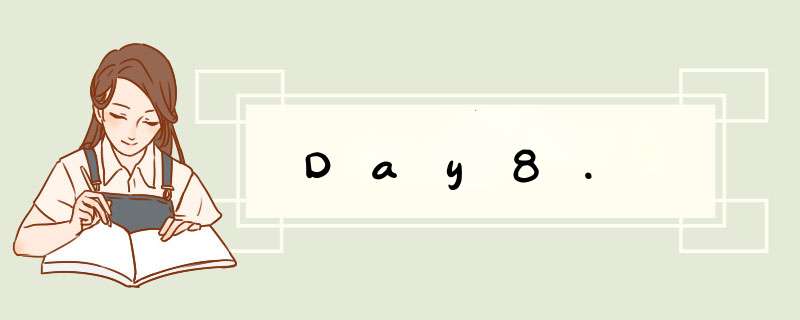
私有属性和私有方法(实现封装)
# 测试私有属性
class Employee:
__company = 'sxt' # 私有类属性
def __init__(self, name, age):
self.name = name
self._age = age # 私有属性
def __work(self): # 私有方法
print('好好工作')
print('年龄:{0}'.format(self._age))
def get_age(self): # 外部访问私有实例属性
return self._age
e = Employee('zf', 18)
print(e.name)
print(e._age) # 外部访问私有属性
print(dir(e)) # 查看实例对象所有属性方法
print(e.__dict__) # 查看实例对象属性字典
print(isinstance(e, Employee))
e._Employee__work()
print(e._Employee__company) #访问私有类属性
@property装饰器
可以将一个方法的调用方式变成属性调用
# 测试@property最简化的使用
class Employee:
def __init__(self, name, salary):
self._name = name
self._salary = salary
@property
def salary(self):
return self._salary
@salary.setter
def salary(self, salary):
if 10000 < salary < 50000:
self._salary = salary
else:
print('录入错误,薪水在10000-50000之内')
'''
def get_salary(self):
return self._salary
def set_salary(self, salary):
if 10000 < salary < 50000:
self._salary = salary
else:
print('录入错误,薪水在10000-50000之内')
'''
emp1 = Employee('zf', 30000)
print(emp1.salary)
emp1.salary = 30001
print(emp1.salary)
面向对象三大特性
封装(隐藏):隐藏对象的属性和方法,只对外提供必要的方法
继承:继承可以让子类具有父类的特性,提高了代码的重用性
多态:同一个方法调用,对象不同而产生不同的行为,例如:同样是休息,人不同休息方法不同,张三休息是睡觉,李四休息是玩游戏
继承
class Person:
def __init__(self, name, age):
self.name = name
self.__age = age # 私有属性
def say_age(self):
print('年龄我也不知道')
@property
def age(self):
return self.__age
class Student(Person):
def __init__(self, name, age, score):
Person.__init__(self, name, age)
self.score = score
print(Student.mro())
s = Student('zf', 18,60)
s.say_age()
print(s.name)
print(dir(s))
print(s._Person__age)
重写:子类可以重新定义父类的方法,这样会覆盖父类的方法,称为重写
class Person:
def __init__(self, name, age):
self.name = name
self.__age = age # 私有属性
def say_age(self):
print('我的年龄是:{0}'.format(self.__age))
def say_introduce(self):
print('我的名字是:{0}'.format(self.name))
class Student(Person):
def __init__(self, name, age, score):
Person.__init__(self, name, age)
self.score = score
'''重写父类的方法'''
def say_introduce(self):
print('报告老师我的名字是:{0}'.format(self.name))
s = Student('zf', 18, 80)
s.say_age()
s.say_introduce() #调用了子类重写的方法
Object根类
object类是所有类的父类,因此所有的类都有 object 类的属性和方法
重写__str__方法
class Person: #默认继承object类
def __init__(self, name):
self.name = name
def __str__(self):
return '名字是:{0}'.format(self.name)
p = Person('zf')
print(p)
mro()
python支持多继承,如果父类中有重名的方法,在子类没有指定父类的情况下,解释器会按照从左向右按顺序搜索
super()获取父类的定义
class A:
def say(self):
print('A', self)
class B(A):
def say(self):
super().say()
print('B')
b = B()
b.say()
多态
多态是方法的多态,属性是没有多态的
多态存在有两个必要条件:继承和方法重写
class Man:
def eat(self):
print('饿了,吃饭了')
class Chinese(Man):
def eat(self):
print('中国人用筷子吃饭')
class English(Man):
def eat(self):
print('英国人用叉子吃饭')
class Indian(Man):
def eat(self):
print('印度人用手吃饭')
def manEat(m):
if isinstance(m, Man):
m.eat()
else:
print('不能吃饭')
特殊方法和运算符重载
class Person:
def __init__(self, name):
self.name = name
def __add__(self, other):
if isinstance(other, Person):
return ('{0}--{1}'.format(self.name, other.name))
else:
return '不是同类对象,不能相加'
def __mul__(self, other):
if isinstance(other, int):
return self.name * other
else:
return '不是同类对象不能想乘'
p1 = Person('zf')
p2 = Person('zf')
p = p1 + p2
print(p)
print(p2 * 2)
特殊属性
# 测试特殊属性
class A:
pass
class B:
pass
class C(B, A):
def __init__(self, nn):
self.nn = nn
def cc(self):
print("cc")
class D(A):
pass
c = C(33)
print(c.__dict__) #对象属性字典
print(c.__dir__()) #
print(c.__class__) #对象所属的类
print(C.__bases__) #类的基类元组(多继承)
print(C.__base__) #类的基类
print(C.__mro__) #类的层次结构
print(A.__subclasses__()) #类的子类列表
组合
“is-a”关系,我们可以使用“继承”。
从而实现子类拥有的父类的方法和属性。
“is-a” 关系指的是类似这样的关系:狗是动物,dog is animal。
狗类就应该继承动物类。
“has-a”关系,我们可以使用“组合”,也能实现一个类拥有另一个类的方法和属性。
” has-a”关系指的是这样的关系:手机拥有 CPU。
MobilePhone has a CPU。
class MobilePhone:
def __init__(self, cpu, screen):
self.cpu = cpu
self.screen = screen
class CPU:
def c(self):
print('计算')
class Screen:
def show(self):
print('显示')
x = CPU()
y = Screen()
z = MobilePhone(x, y)
z.cpu.c()
z.screen.show()
欢迎分享,转载请注明来源:内存溢出

 微信扫一扫
微信扫一扫
 支付宝扫一扫
支付宝扫一扫
评论列表(0条)